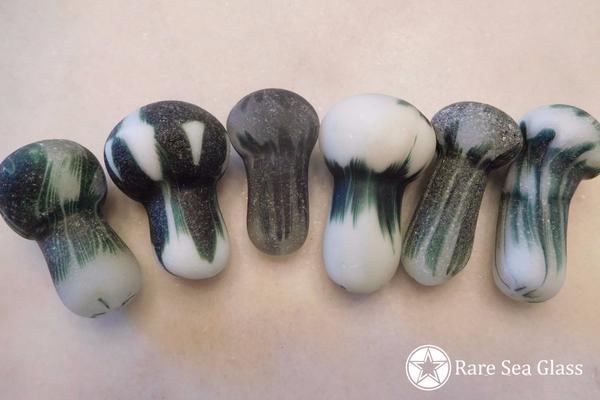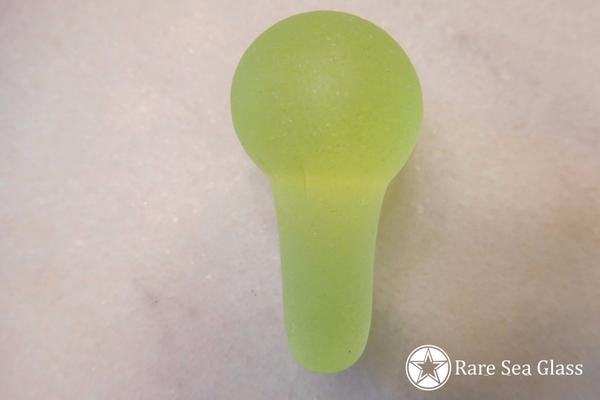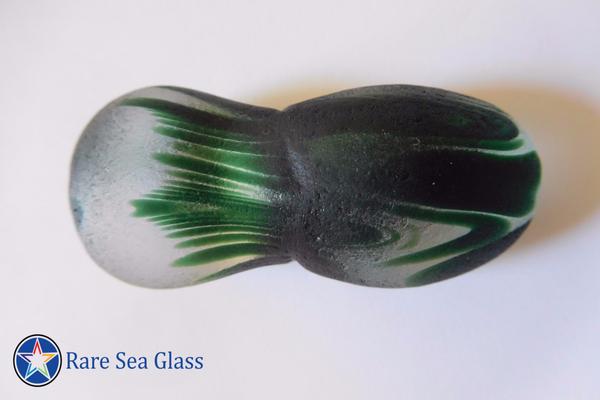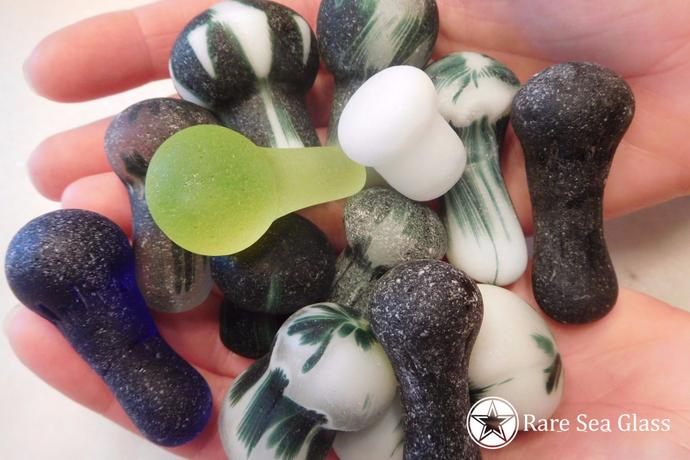Davenport sea glass is some of the most beautiful sea glass in the world. One look and you know it’s something special. It’s so different than other pieces commonly found on other beaches. Many of the pieces are multi-colored, and it’s not unusual to find colors which are rarely found at other beaches. If you’ve ever seen a piece of Davenport sea glass, one of the first questions that usually comes to mind is, “Where did it come from?” The pieces are so unusual compared to most other sea glass that many people wonder why it’s so unique.
One of the aspects that makes hunting at Davenport so much fun is there’s such a wide variety of pieces that can potentially be found. You never know what you might spy among the gravel. Many, like the world globe pieces, are highly sought after by collectors. Another piece those hunting are always looking to score is a mushroom.
Mushrooms get their name simply because of their resemblance to mushrooms, with a bulb on the end and a thinner length as the stem. They are formed as a remnant of the art glass blowing process. After that main glass has been blown, glass still remains in the glass blowing tube. These castoff remnants often take the shape of a mushroom when removed from the blowing tube.
Mushrooms are quite rare to find because they often don’t remain intact. Due to the rough seas and gravel at Davenport, more often than not the stems of the mushrooms get broken off while they are tumbling. While there was likely a large number that originally got swept into the ocean, only a fraction of them remain wholly intact when they are found today. This makes them quite rare and highly prized by collectors.
The most common colors for the mushrooms at Davenport seem to be the green & white or green & clear

In addition, there are a variety of other color combinations which have been found as well, but they are much less common. The pure UV mushrooms are especially prized, along with rare colored mushrooms in reds and pinks.

Hunters are actually much more likely to find what I call “pseudo” mushrooms. It’s important to remember that the mushrooms that are found were never supposed to be mushrooms — it was simply the way the remnant glass came out of the glass blowing tube when they were cleaned. The glass left the tube in all sorts of shapes and sizes like the double bulb below. It doesn’t look like a mushroom but doesn’t really resemble any other object in particular.

For this reason, some hunters call any piece that came from the glass blowing tube a mushroom, although purists reserve the name for those pieces where there is no doubt that it resembles a mushroom.

